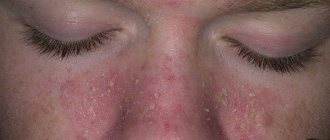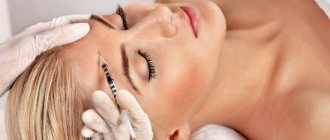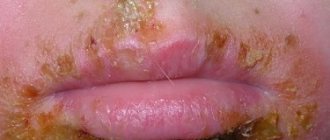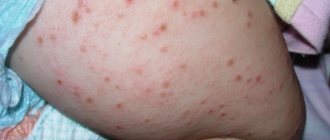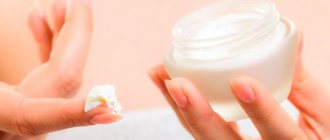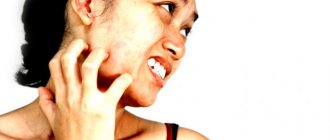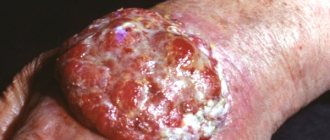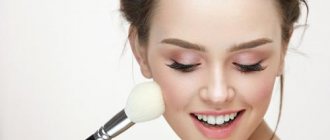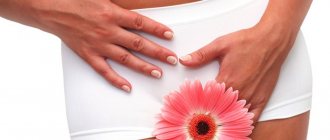The structure of human skin is special; it is influenced by various factors, both external and internal. They are responsible for skin diseases. Many of the diseases are the result of factors such as parasites, viruses and microscopic fungi. Most often, the infection gets to the skin and deep soft tissues due to damage - it does not have to be a large wound, just micro damage is enough for bacteria and microbes to penetrate inside the cells and start the process of changing the body, infecting it.
Infections of the skin and soft tissues are found everywhere, and people of different age groups are susceptible to them; such diseases can appear not only in adults, but also in children. Only a competent specialist can distinguish between a non-infectious and an infectious disease. That is why you should not try to cure yourself, because most often it does not bring any results. Before starting drug treatment or therapy, it is necessary to find out the cause of the disease. Moreover, any skin disease implies an urgent visit to the doctor at the first changes in the skin in order to reduce the negative consequences of the disease. Read on for more information about the treatment of skin infections (photo attached).
Causes of bacterial skin diseases
The content of the article
Human skin is the largest organ in the human body. Its surface is not sterile and is populated by numerous microorganisms, which under normal conditions do not cause infection.
The growth of pathogenic bacteria responsible for infections is prevented by tightly packed epithelial skin cells, an acidic pH (5.4-5.9), a relatively dry environment, and natural antibacterial substances in the skin. Therefore, bacterial skin diseases are relatively rare.
However, certain conditions associated with injury to the epidermis, disruption of its protective function (skin inflammation) or a general decrease in immunity (tumors, diabetes, AIDS) contribute to the involvement of the skin in the inflammatory process.
A different situation arises in the case of Lyme disease, since in this case the pathogen enters the human body through a tick bite.
Causes of red palms that need treatment
But in some cases, the causes of red or pink palms are much more serious.
Allergy
The cause of redness of the skin of the palms, the unexpected appearance of small red pimples, may be an allergic reaction. Allergen provocateurs in such situations are almost always chemical elements from household chemicals and decorative cosmetics, food products and some medications.
In the absence of effective treatment, increased sensitivity of the immune system to a certain substance can lead to the appearance of a chronic form of skin dermatitis and eczema.
Liver diseases
Perhaps she has ceased to cope with a large number of toxic substances that come with food, alcohol, or as a result of an infectious disease or long-term use of medications. The reason why both palms are red on the hands may be cirrhosis of the liver or hepatitis.
Hypovitaminosis
Rarely, hyperemia of the palms indicates hypovitaminosis. Scarlet palms with regular numbness in the fingers and hands, burning and itching of the hands indicate a lack of B vitamins in the body. Almost always, this disease occurs against the background of poor nutrition, which negatively affects the functioning of the cardiovascular system, central nervous system, and immunity.
Allergy
First of all, a change in the shade of the skin is considered an allergic reaction.
In addition to redness, the development of allergies is indicated by accompanying symptoms:
- the appearance of itching;
- the appearance of bubbles at the edges of the spots;
- roughness of spots;
- peeling of the skin.
Liver diseases
Often, redness of the palms indicates the development of liver failure or cirrhosis. There is a special term for this sign: “liver palms.” Redness is accompanied by itching and a feeling of heat. At the same time, the development of liver diseases is indicated by the absolutely symmetrical appearance of reddish spots on both hands.
Hypovitaminosis
The appearance of red spots indicates the development of a deficiency of B vitamins. It can become chronic. Vitamins are constant participants in the process of skin formation at the cellular level.
A sign of vitamin B deficiency is redness of the palms of the hands. To make up for the deficiency, you need to introduce foods from the table into your diet
If the nutrients entering the body are not enough, a reaction will begin, which indicates the impossibility of fully completing the formation of the epidermis.
The appearance of red spots on the inner and outer sides of the palms is accompanied by additional symptoms:
- increased fatigue, irritability, weakness;
- peeling of the top layer of skin on the palms, elbows, feet;
- change in complexion;
- detachment of nail plates;
- deterioration in the appearance of hair.
Lane's disease
Hereditary diseases can also cause changes in skin color. Lane's disease is a genetic pathology most often called palmar erythema. It manifests itself due to abnormal expansion of capillaries on the palms.
Psoriasis
With psoriasis, the redness of the palms is of a special nature. Experts distinguish several stages.
| Stages | Development of psoriasis |
| initial stage | Redness of palms, itching between fingers |
| Middle stage | The spots have a clear outline, papules form under them, and the itching intensifies |
| Late stage | The skin over the papules begins to crack, forming itchy sores |
Psoriasis is accompanied by incessant itching of the palms. In the absence of adequate therapy, the skin on the palms of the hands begins to crack, becomes dry and hard.
Heart diseases
Systematic redness of the palms may indicate diseases of the cardiovascular system. In this case, the appearance of redness is a concomitant symptom of a serious disease.
The course of heart disease is always associated with more pronounced symptoms:
- dyspnea;
- heart rhythm disturbance;
- increased sweating;
- dizziness;
- fast fatiguability.
Reiter's syndrome
Reiter's syndrome is an allergic disease resulting from chronic inflammation of the gastrointestinal tract. The disease is autoimmune in nature; during the development of the disease, blood counts change and various symptoms appear. At different stages of Reiter's disease, joint dysfunction, visual disturbances, and discoloration of different areas of the skin are diagnosed.
Folliculitis and fever
As the name suggests, it is an inflammation of the hair follicle. This condition manifests itself in the appearance of a single vesicle or numerous vesicles filled with purulent contents, sometimes riddled with hair in the center. Changes may appear on the face, trunk or limbs. Sometimes they are associated with depilatory procedures or shaving.
Folliculitis
The chronic form of folliculitis occurs more often in men on the face, especially on the chin, and less often on the scalp. This form is characterized by a duration of several months and the appearance of inflammatory tumors in the skin.
Treatment of acute inflammation of hair follicles with low intensity consists of skin disinfection and the use of topical medications containing an antibiotic. However, treatment for folliculitis is often difficult and lengthy.
Treatment
Treatment should be prescribed exclusively by a doctor, based on the results of the examination and the established cause of the development of such pathology.
For symptomatic therapy, the following drugs can be used:
- external preparations to relieve itching and pain;
- antibiotics;
- antihistamines.
If the cause of the appearance of such spots is an allergy, then antiallergic drugs may be prescribed. An individual diet is also developed and the necessary vitamin complexes are prescribed.
In general, treatment will completely depend only on the etiology of this pathological process. The use of folk remedies or ointments can eliminate the symptoms, but not the root cause itself.
Furuncle
It is also an inflammation of the hair follicle and surrounding tissues. The difference with follicular inflammation is that during the formation of a boil, death and destruction of the tissue around the follicle occurs. A tumor is formed containing dead tissue, which either spontaneously or as a result of intervention is separated, leaving a skin defect.
Furuncle
The damage takes several days to form and is often painful. The skin is initially bright red and swollen, and after a few days a pimple forms on its surface. After healing, a scar may remain.
Treatment - how to get rid of allergies on the palms?
The process of treating an allergic reaction that manifests itself on the palms of the hands consists of the use of traditional medications that belong to the antihistamine group. In the treatment process, the following means are used:
- Tablets Aleron, Ketotifen, Eden, L-cet. Take them orally with the required amount of water. The dosage of each type of drug is different. Some medications need to be taken 2-3 tablets daily, but an allergy medicine such as Aleron is enough to take only 1 tablet per day, but at the same time. The final dosage and timing of therapy is determined by an allergist or therapist if a specialized specialist is not available at the medical institution.
- Suprastin, Suprastinol, Diprospan, Prednisolone, Ruzam. These are intramuscular injections of antihistamines. Intended for the treatment of acute forms of an allergic reaction. Injection therapy by intramuscular administration of the drug is used if taking tablet forms of antiallergic drugs does not bring a positive effect.
- Ointments and creams Epidel, Lanolin, Dropalen, Fluorocort. They are applied directly to the surface of reddened palms. The active components of antihistamine drugs in this category reduce swelling of the epidermal tissues, relieve itching, and prevent the formation of rashes. The use of ointments and creams in the treatment of reddened palms is effective only in complex therapy.
To achieve the most positive result aimed at getting rid of redness of the skin of the palms, it is imperative to identify the allergen that provokes the pathological condition of the epithelium and eliminate it from your usual lifestyle. Only then can you count on a complete cure for allergies.
Furunculosis
Most often, the development of one boil occurs quickly, and healing occurs within a few days. However, it should be remembered that in the case of boils in the facial area, especially around the orbit, nose, upper lip and auricles, due to the specific vascularization of these areas and the close proximity of important structures of the central nervous system within the skull, serious complications can occur.
Furunculosis is a condition in which many boils occur. Numerous changes tend to coalesce and form larger tumors. These symptoms often occur in malnourished people with underlying medical conditions such as cancer or diabetes.
Treatment of boils should be carried out by a dermatologist. For a single boil, topical antiseptics and astringents are usually sufficient. Multiple boils or clustered boils should be treated with systemic antibiotics. Fusion of purulent tumors requires surgical intervention.
Care for inflamed facial skin
And, of course, no inflammation will go away from the face if you do not provide the skin with proper care.
- Drug treatment is carried out only with the permission of a doctor and under his strict, constant supervision. Self-medication can provoke even more extensive and widespread inflammation on the face, which may require serious hospital treatment.
- Be sure to normalize the regimen and composition of your diet . Limit the amount of smoked, sweet, fried, and fatty foods in your diet. Include as many fresh juices, fruits, herbs, vegetables, and nuts as possible.
- Ensure that the inflamed area is completely inviolable: do not touch it with your hands and limit any other contact with this area. It is strictly forbidden to squeeze out ulcers, blackheads, and pimples on your own at home : this can cause infection to enter the wound. Mechanical cleansing of the face during inflammation is allowed only in salon conditions.
- Try not to injure your skin with scrubs , despite their excellent cleansing ability. It is better to replace it with a special gel for problematic or sensitive skin .
- You will have to exclude hot baths and washing .
To care for inflamed skin, you need either slightly warm, cool, or room temperature water. Moreover, it is advisable not to take it from a water supply system that does not have filters. It’s better to buy non-carbonated mineral water. Instead of water, it will be much more effective to use decoctions and infusions of medicinal herbs that have an anti-inflammatory effect: chamomile, calendula, St. John's wort, yarrow, parsley, string, oak bark, etc. Pour two tablespoons of chopped herbs into two glasses of boiling water, leave for an hour, strain, wash . - Twice a week, clean your pores using steam baths with the herbs indicated in the previous paragraph (a glass of infusion per liter of water), or with essential oils that have antibacterial and anti-inflammatory properties - tea tree, lavender, jojoba, citrus fruits, rose hips (10 drops per liter water).
- any folk anti-inflammatory skin remedy (especially homemade masks) first on the wrist or inner bend of the elbow to avoid an allergic reaction later.
- Take multivitamin complexes (at least twice a year) to strengthen the immune system and protect the nervous system.
- Get regular medical examinations (once a year) to identify internal diseases that can trigger inflammatory processes on the skin of the face.
If you want to eliminate the inflammatory process on the face in the shortest possible time and as safely as possible for your own skin and your own health, try to find out the causes of this unpleasant phenomenon and consult a doctor in a timely manner.
In any case, even if the reason is not so global, it will not be superfluous. Recommendations from a specialist will help you solve the problem and choose from a variety of anti-inflammatory drugs the most effective and efficient one in your case.
Rosacea
This is an acute inflammation of the skin and deeper tissues.
The disease can occur at any age. Skin lesions are most often localized on the face and lower extremities. The inflammatory focus of the skin is bright red, swollen, clearly demarcated from the environment, the skin is smooth and shiny. The disease is characterized by a sudden onset. Skin changes are accompanied by fever, chills and cold-like symptoms.
Rosacea
This disease can cause serious systemic disorders and should always be treated by a doctor. Without treatment, rosacea can lead to the spread of purulent infection into surrounding tissues, introducing bacteria into the bloodstream and thus causing sepsis.
The main therapeutic method for rosacea is the use of antibiotics in general. Compresses with astringents can be used locally.
Psoriasis
Dermatosis that affects the skin and progresses to a chronic stage is usually called psoriasis. However, this hypothesis has not been proven. Many doctors do not agree with her, and the mechanism of development of psoriasis is considered autoimmune.
The most common sign of psoriasis is dry, red, raised patches called psoriatic plaques. Inflammation in psoriasis occurs due to excessive lymphatic proliferation, increased numbers of macrophages and dermal keratinocytes. All these factors lead to the fact that the skin in the affected area thickens and acquires an uncharacteristic color.
Infectious impetigo and hepatitis
This is an acute bacterial skin disease that often affects children. As a result of the growth of bacteria, blisters filled with serous or purulent contents form on the skin. After a few days, the blisters burst, forming crusts with a characteristic honey-yellow color.
Infectious impetigo
The changes usually occur around the mouth and nose, but can occur anywhere. If the infection covers the deeper layers of the skin, small ulcers occur. Skin changes are not accompanied by general symptoms. Impetigo is highly contagious, so the epidemic can affect kindergartens and boarding schools.
The disease always requires medical consultation. Treatment with topical disinfectants and antibiotics is most often effective and sufficient.
Erysipelas
Erysipelas is caused by capillary hair bacterium. This is a pathogen found in animals, most often in cattle, less often in birds and fish. Infection occurs through direct contact with raw meat, poultry or fish, so skin lesions are most often localized on the hands and fingers.
Erysipelas
The disease is not transmitted from person to person. Initially, swelling and erythema appear at the entry site. The lesion then spreads peripherally with a tendency to heal centrally. The changes are not accompanied by general symptoms.
Diagnosis of the disease requires consultation with a dermatologist. The choice of treatment is general antibiotic therapy under medical supervision.
Methods for treating redness on the skin
To get rid of severe burning and itching, it is necessary to use antipruritic medications. They act instantly, immediately after application the itching goes away, the desire to scratch the skin is eliminated, and accordingly, avoiding scratching reduces the risk of a secondary infection.
Redness on the hands occurs due to many reasons. Some of them are harmless - hypothermia, others require immediate and adequate treatment - fungal infection, psoriasis, eczema, etc. A dermatologist will help determine the original source. Self-medication will not give the desired result, but the likelihood of complications is extremely high.
A rash on the wrists appears quite often. This area has the thinnest and most delicate skin, which reacts sharply to any impact. In most cases, the problem is contact dermatitis. The skin is irritated by watch straps, bracelets, and chafing from sleeves and cuffs. Sometimes the problem may be cosmetics, soap or household chemicals.
In such cases, getting rid of the problem is quite simple. You need to take an antihistamine and anoint the affected area with an ointment with a cooling and soothing effect. During treatment, contact with water and rubbing parts of clothing should be avoided. It is also necessary to find out what exactly caused such a reaction and stop using it.
In some cases, the cause of rashes is stress. Due to psychological stress, the conduction of nerve impulses is disrupted. So-called nervous prurigo occurs. The delicate and vulnerable skin of the wrist is easily damaged and covered with a rash. To eliminate the problem, you should drink a sedative and treat the combed areas with regenerating and antipruritic ointment.
Sometimes the cause of the problem is pathology. The most alarming cases are when the rash on the wrists does not itch.
Actinomycosis
The disease is caused by the bacterium Actinomyces israeli. This microorganism can live in the human mouth without causing disease. As a result of injury to the mucous membrane, the pathogen can penetrate deeper, causing actinomycosis. The development of the disease is predisposed by inflammation of the oral cavity accompanied by tooth decay, periapical infections of the teeth, and inflammation of the gum pockets. Skin changes occur on the face and neck.
Initially, they take the form of inflammatory tumors, which then disintegrate, forming fistulas, that is, channels that emerge from the surface of the skin. In purulent discharge from fistulas, characteristic yellowish grains are found. Skin changes may be accompanied by general symptoms such as fever and flu-like symptoms. Actinomycosis can also affect the internal organs of the chest and abdominal cavity.
Diagnosis and treatment of the disease requires the mandatory participation of a dermatologist, and sometimes a surgeon. For treatment, general antibiotic therapy is prescribed. Surgical treatment is used to empty pus reservoirs and remove fistulas.
Treatment of allergies on the palms
First of all, treatment should be aimed at recognizing the allergen that caused the allergy. It must be remembered that making a diagnosis and prescribing treatment on your own is unacceptable, especially in the case of children. Medicines for the treatment of allergies should only be prescribed by a doctor. Everyone is individual, and it is not a fact that the medications one person takes will suit other people. Doctors prescribe medications depending on the stage of the allergic reaction, the individual characteristics of the body and the age of the patient.
If allergies on the palms are a consequence of eating allergenic foods, then doctors prescribe a diet in which there are restrictions on the following types of foods:
- flour products;
- dairy products;
- berries and fruits (all except green ones);
- eggs;
- meat of geese, ducks;
- beef;
- celery;
- cabbage;
- legumes;
- coffee and black tea;
- jelly.
If the reaction is severe, then, in addition to eliminating allergens, blood purification drips and antihistamines are prescribed to treat food allergies.
Allergy treatment is always carried out according to the following principles:
- elimination of the allergen;
- decreased histamine levels in the blood;
- use of ointments.
Doctors recommend using second- and third-generation antihistamines for allergies, since they do not cause (if taken correctly) side effects, including drowsiness. Among such products we can highlight “Fenistil”, “Loratadine”.
Ointments as a means of reducing an allergic reaction are applied directly to the palms. Of these medications, the most effective are “Skin-Cap”, “Gistan”, “Fenistil-gel”.
Particular attention has recently been paid to the product “Desitin”. It fights allergic reactions very well and is approved for use even by children. The ointment relieves inflammation, removes redness and promotes healing of microcracks
The ointment relieves inflammation, removes redness and promotes the healing of microcracks.
If the allergic reaction is severe, hormonal drugs are used.
Allergies can be accompanied by suppuration and inflammation if a person scratches their palms. Through microcracks, the infection enters the bloodstream, and pus begins to accumulate under the skin. To eliminate these conditions, a course of antibiotics and the use of various blockers of inflammatory processes (Vishnevsky ointment, ichthyol ointment) are prescribed.
Is it possible to completely cure bacterial dermatological diseases?
In most cases of bacterial skin diseases, treatment with antibiotics is effective and leads to complete recovery. However, in patients with compromised immune systems, such as those with diabetes, cancer, rheumatoid arthritis, or HIV infection, bacterial skin infections can be chronic or recurrent and pose a serious health problem, causing serious complications.
ONLINE REGISTRATION at the DIANA clinic
You can sign up by calling the toll-free phone number 8-800-707-15-60 or filling out the contact form. In this case, we will contact you ourselves.
If you find an error, please select a piece of text and press Ctrl+Enter
